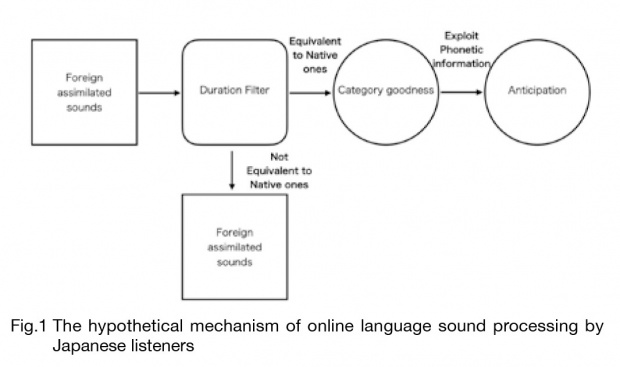Organization for Fundamental Education
- Key words
- Phonetics, Phonology, psycholinguistics, Japanese, English, Cross-language transfer, speech perception, language processing, assimilation

Master of Linguistics / Lecture
Naoya Mori
Education
Doshisha University, Faculty of Letters, Department of English
Doshisha University, Graduate school of Letters, Doctoral program (1st half) of English Literature and English Linguistics
Professional Background
Part-time Lecturer at Kindai University, Faculty of Business Administration
Part-time Lecturer at Osaka Medical College, Faculty of Nursing
Part-time Lecturer at Osaka University of Economics and Law, Faculty of International Studies
Consultations, Lectures, and Collaborative Research Themes
Speech perception, Voice Recognition, Phonics
Main research themes and their characteristics
「Exploitation of lower phonetic information in processing of English assimilated sound by Japanese learners of English」
The current research investigates how Japanese learners of English use phonetic/phonological information to facilitate language processing through experiments, including what inhibits their processing. When listeners hear utterances from other speakers, the language sounds are not phonemically the same as they heard: they go through sound alternations. One of those alternations is caused by assimilation. The assimilation is a linguistic phenomenon that a segment is influenced to change its features by other sounds around it, which is widely observed in a lot of languages. For example, both Japanese words てんぷら ‘tempura’ and てんたい‘celestial being’ contain a moraic nasal segment ん /N/. Still, their pronunciations are different as the former has changed to as [m] due to its following /p/, and the latter has altered into [n] because of its succedent /t/. We successfully recognize those phonetically different segments as a single phoneme because we unconsciously know the rules of sound alternations in our first language. We use that linguistic knowledge not only for recognition but also for the facilitation of our auditory processing. (Gow, 2003; Otake et al., 1996) Furthermore, preceding studies indicate that listeners exploit the assimilation knowledge for restoring underlying forms of ambiguous segments that result from sound alternation. (Gaskell & Marslen-Wilson, 1996; Mori, 2013) Thus exploitation of segments undergoing sound alternation by listeners plays an essential role in language processing. Knowledge about assimilation is, however, not the only key in language processing. Among factors possibly have something with language processing, segmental duration functions as a critical component. For instance, French listeners distinguish N+V (nasal and vowel) sequences from N+V (nasal and nasalized vowel) by its duration of nasal sounds. (Shoemaker, 2014) Listeners’ use of segmental duration in cross-language perception also interests researchers. There have been reports on labio-dental perception on German learners of Dutch who had difficulty identifying Dutch labio-dental under untrained circumstances (Hamann & Sennema, 2005) and cross-language comparison among English, Japanese, and Korean. (Sato, 1993) Based on these studies, Mori (2019) carried out an experiment to investigate whether the lengthened assimilated English final nasal of a pre-target can provoke Japanese listeners’ facilitation effect or not. The result indicates that the modified longer assimilated final nasal facilitates Japanese listeners’ language processing. This result is apparent evidence that Japanese listeners process English sounds based on their knowledge of Japanese, syllable-final segmental duration in this case. What must be noted here is the role of duration in language processing in Japanese. Mori (2019) tried theorizing its function as a “filter” that screens out incoming segments whose duration is shorter than that of Japanese nasals. Figure 1 illustrates the hypothetical mechanism of language processing in Japanese listeners’ minds. The duration filter selectively passes through long enough assimilated segments, and then featural information on the segment triggers anticipation, and we get a facilitation effect in language processing. In the future study, it is expected that the validity of the filter theory is examined in other languages besides Japanese.
Major academic publications
Mori, N. (2015). Japanese Listeners' Compensation and the Use of Contextual Information at the Segmental Level. Phonological Studies, (18), 59-66.
Mori, N. (2018) Research on the Processing of Nasal Sounds by Japanese Listeners, Kindai university center for liberal arts and foreign language education journal. Foreign Language edition, 9(2), 97-115
Mori, N. (2019) Native Japanese Listeners’ Use of Assimilated Nasals in Online Auditory Processing, JAAL in JACET Proceedings, (1), 16-22

